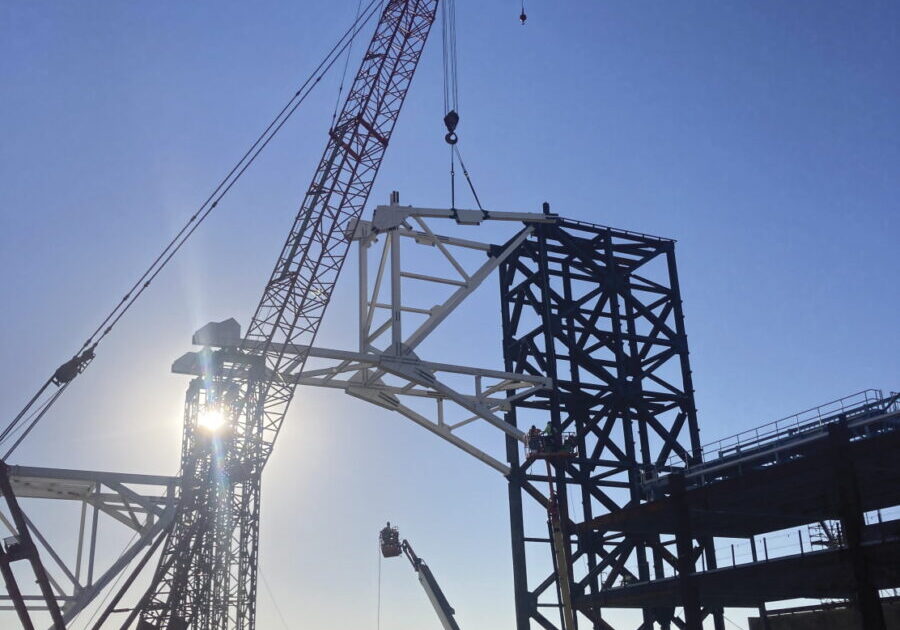Engineering Inc. magazine
Strand Jacks Star in the High-Flying Hanger Expansion for UPS by Ruby+Associates, a Degenkolb Company
With a 225-foot wingspan, the Boeing 747-8F is the largest plane in UPS’s fleet. Parking a pair of them side by side requires a truly immense hangar.
That’s something the global delivery giant lacked—until recently. This spring, the carrier completed work on a $220 million expansion of its Worldport hub in Louisville, Kentucky, that includes a 520-foot-span door capable of accommodating two 747-8Fs in the same maintenance hangar.
THE SKY’S THE LIMIT
The conventional approach to building the 45-foot-deep-by-20-foot-wide box truss required to span the door opening is to use multiple cranes and assemble the truss in the air on top of numerous 80-foot-tall shores. This method requires not only the procurement and foundation of those shores but also the rental of large crawler cranes, with iron workers assembling the truss at heights in boom lifts. Rather than relying on cranes to build the new hangar’s box truss, engineers from Ruby+Associates, a Degenkolb Company—working on behalf of its client Midwest Steel and alongside general contractor Hensel Phelps—proposed using an alternate technology: strand jacks.
A strand jack is a hydraulic jack that works by gripping and pulling bundles of stranded steel wire ropes through a hydraulic jacking cylinder. The strand is then clamped down while the cylinder releases its grip and moves to grab and pull the next portion of the strand—“kind of like the hand-over-hand method of pulling on a chain,” explains Jeff Gasparott, a principal and regional practice area leader of construction engineering services at Ruby.
Strand jacks are most often associated with offshore projects, but that’s hardly their only application. Indeed, 20 years ago, Ruby worked extensively with strand jacks during the construction of Ford Field in Detroit, home of the NFL’s Detroit Lions, as the stadium’s roof was largely assembled on the ground and then hoisted into place using strand jacks. Two decades later, as the firm’s engineers grappled with the challenges of constructing the UPS maintenance hangar in Louisville, the technology again seemed the right fit.
Click here to continue reading this Engineering Inc. article.







